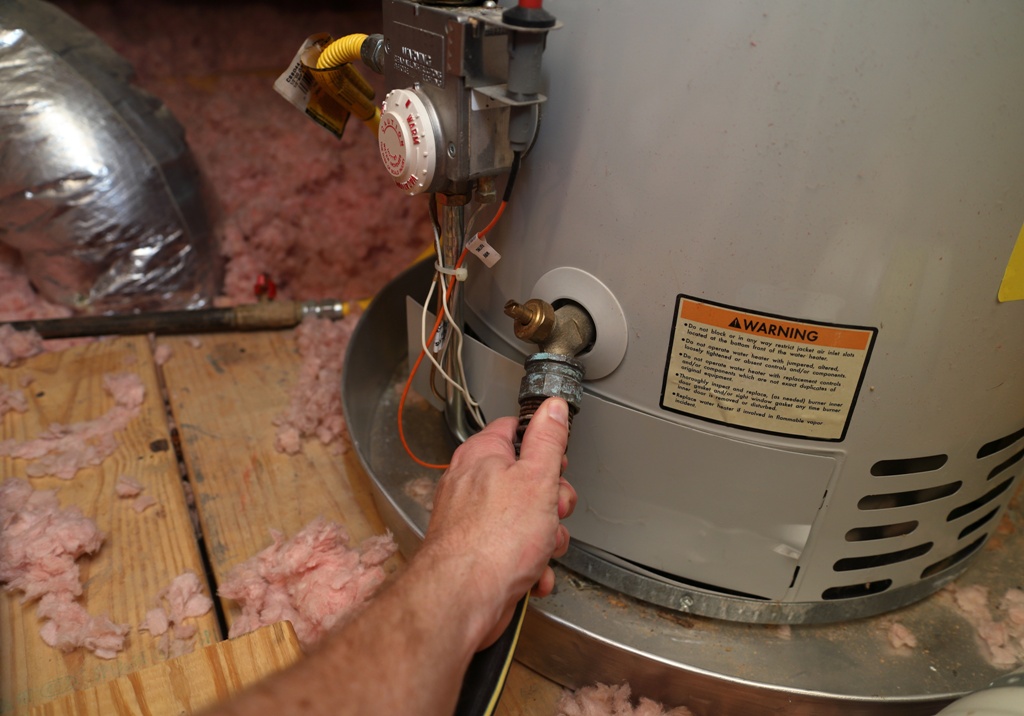While many homeowners take on the task of fixing their water heater by themselves, they may not have the right knowledge to carry out the task. This could lead to further damage. However, when DIY water heater repair is done with proper understanding and knowledge, you may save yourself a pretty penny.
In water heaters, the heating elements tend to get spoilt before the heater. If you’re on a budget while repairing, you might want to consider that replacing the heating elements in the water heater is an easy DIY repair procedure. This will not only help you to save costs, but will also ensure that your water heater works perfectly well.
If your water heater is slow to heat and doesn’t give hot water, you may be able to solve this issue simply by replacing the heating elements. Below, we discuss how to fix your water heater while on a budget.
-
Check The Circuit Breaker
Before you start to check the heating elements, consider the circuit breaker. Make sure that it’s on and hasn’t tripped. You may also reset the high-temperature cut-off. To do this, press the high-temperature cutoff button that’s located just above the upper thermostat.
While resetting the circuit breaker or the high-temperature cut-off may solve the issue, the fact that they tripped at all could be an indicator of an electrical problem. If it happens again, you should consider consulting an electrician.
If you heating element doesn’t have a problem, there could be an issue with the thermostat and the cut-off switch. In this case, testing them can be a complicated process. Since these are inexpensive, you may simply choose to replace them. Check WaterHeaterHub.com to learn how to do this.
-
Replacing Heating Elements
If the heating elements in your water heater need to be replaced, it can be done in a straightforward DIY process. Since heating elements are inexpensive, the cost of repair is also minimal. However, before you go ahead and replace them, keep in mind that water heaters often last for 10 to 15 years. Thus, if your water heater is old, it’s a better idea to replace it. If it’s relatively new and is not heating the water properly, you should consider changing the heating elements.
When you’re learning how to replace heating elements in a water heater, it’s important to have someone experienced with you. You will need them to read the element and compare the continuity between the terminals. To help determine continuity, you need to use a multimeter. Using this device, you can test the element to see if there is continuity between the terminals.
If there are no continuity signals, or if there are multiple continuity signals, this means you have a problem. The two heating elements to look at are the lower, which is usually a fuse, and the upper heating element. Different numbers are required for various heating elements, so be sure to ask the store where you purchased your water heater what numbers are necessary for the water heater you have. If you don’t have the proper numbers, you may have to buy more than one heating element to fix the problem.
Step-By-Step Process For Replacing Heating Elements
Below, we look at a step-by-step process of replacing the heating elements in a water heater.
-
Step 1: Remove The Cover
Start by turning off the circuit breaker. Then remove the metal cover plates from your water heater, so that you see the thermostats and elements.
-
Step 2: Test The Wires
To test the wires in the water heater, you will have to remove the metal thermostat cover and the insulation. Hold the tester near the wires that are leading to the high-temperature cutoff switch. If the device doesn’t light up, then it’s safe to test the elements.
-
Step 3: Test Continuity Signals
To check the continuity signals, you’ll need a continuity tester. Start by disconnecting all the wires from the terminal. Then, clip the clamp onto one of the element screws, and touch another screw with the tester. If it doesn’t light up, then you can replace the element.
-
Step 4: Test Short Circuit
To test for a short circuit, attach the alligator clip to the element screw and then touch the tester to the element bracket. Do this for the other elements too. If the tester lights up, there’s a short circuit and you may have to replace the element.
-
Step 5: Remove The Element
To remove the old element, unscrew it using a heating element wrench.
-
Step 6: Replace With New Element
Put the new heating element into the water heater, and fasten it with a heating wrench. Reconnect the wires and replace all the insulation and metal covers. Make sure to replace the heating element with one that has the same wattage as the previous.
Some Of The Common Water Heater Problems
Below are some of the common most water heater problems, and the reasons why they occur.
- No Hot Water: This could happen because the water heater is not getting power, or the heating elements are not working.
- Water Temperature Is Too Hot: When your water heater thermostat is set at a very high temperature, the water supply will be too hot. Simply check the thermostat and reset it to a lower temperature.
- Water Leaks: Water leakage in your water heater could be due to loose heating elements or tank corrosion. If the heating elements are loose, you may tighten them with an element wrench. If the tank is corroded, you may have to replace it with a new one.
Conclusion
If your water heater is not heating the water enough or is not working at all, checking it by yourself can be a convenient and cost-effective way of repairing it. However, if you’re considering a DIY repair procedure for your water heater, make sure to research the procedure and follow instructions. This will ensure that you repair your water heater without causing any damage to it.
Also, make sure to research and take the proper safety precautions. If there’s one thing worse than a broken water heater, it’s being electrocuted.



















